โครงการนี้จะแสดงให้คุณเห็นวิธีการนำ กลาสแวร์ตัวหนึ่งที่สาธิตฟังก์ชันการทำงานหลักๆ ของ Google Mirror API
ดูการสาธิตการใช้งานฉบับย่อของโปรเจ็กต์คู่มือเริ่มต้นได้ที่ https://glass-python-starter-demo.appspot.com. หรืออ่านต่อไปเพื่อดูวิธีทำให้เวอร์ชันของคุณใช้งานได้
ข้อกำหนดเบื้องต้น
App Engine SDK สำหรับ Python - มีการใช้งานโปรเจ็กต์คู่มือเริ่มต้นฉบับย่อสำหรับ Python โดยใช้ App Engine คุณต้องมี Python App Engine SDK เพื่อพัฒนาและทำให้โปรเจ็กต์ของคุณใช้งานได้ เรียกใช้โปรแกรมติดตั้งตามความเหมาะสมสำหรับแพลตฟอร์มของคุณ หรือแตกไฟล์ ZIP ในที่ที่สะดวก
การสร้างอินสแตนซ์ Google App Engine
คุณจะต้องโฮสต์โปรเจ็กต์เริ่มต้นอย่างรวดเร็วบนอินสแตนซ์ของ Google App Engine โดยทำดังนี้
- ไปที่ http://appspot.com
- คลิก Create Application และสร้างอินสแตนซ์ Google App Engine สาธารณะที่โฮสต์บน
appspot.com - กำหนดตัวระบุแอปพลิเคชันให้กับแอปพลิเคชันและปล่อยให้การตรวจสอบสิทธิ์เปิดให้กับ Google ทั้งหมด ผู้ใช้บัญชี คุณจะต้องใช้ตัวระบุแอปพลิเคชันในภายหลังเพื่อกำหนดค่าโปรเจ็กต์เริ่มต้นอย่างรวดเร็ว
การสร้างโปรเจ็กต์คอนโซล Google APIs
ถัดไป ให้เปิดใช้งานการเข้าถึง Google Mirror API โดยทำดังนี้
- ไปที่คอนโซล Google API แล้วสร้างโปรเจ็กต์ API ใหม่
- คลิกบริการและเปิดใช้ Google Mirror API สำหรับโปรเจ็กต์ใหม่
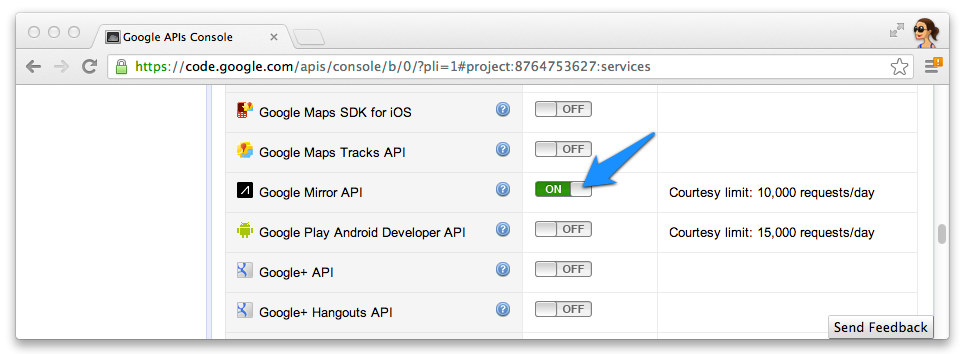
- คลิกการเข้าถึง API และสร้างรหัสไคลเอ็นต์ OAuth 2.0 สำหรับเว็บแอปพลิเคชัน
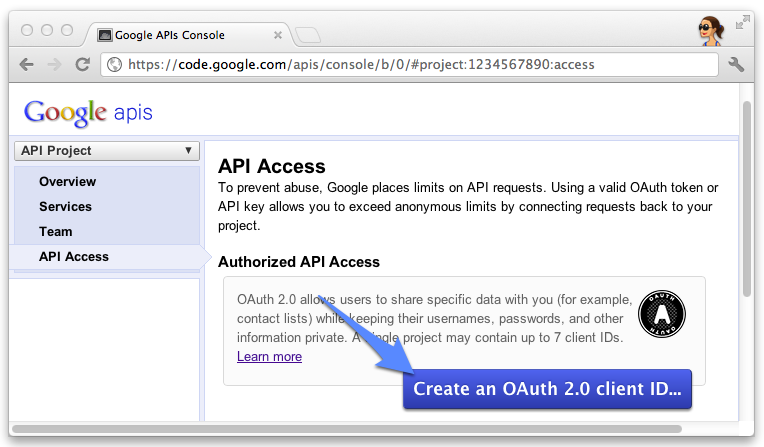
- ระบุชื่อและไอคอนผลิตภัณฑ์สำหรับ Glassware ของคุณ ช่องเหล่านี้ปรากฏบนการให้สิทธิ์ OAuth
ที่แสดงให้ผู้ใช้เห็น
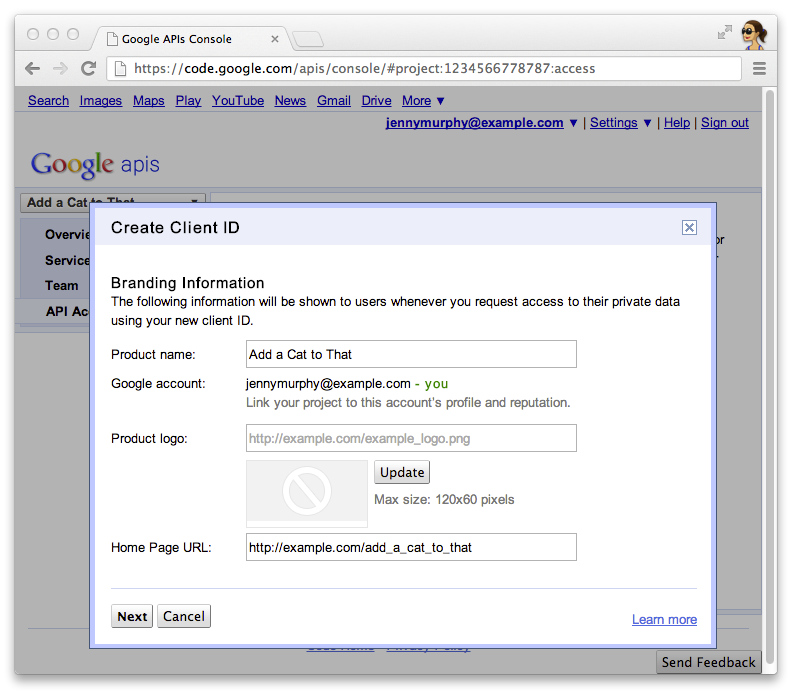
- เลือกเว็บแอปพลิเคชัน แล้วระบุค่าสำหรับชื่อโฮสต์ เช่น
localhost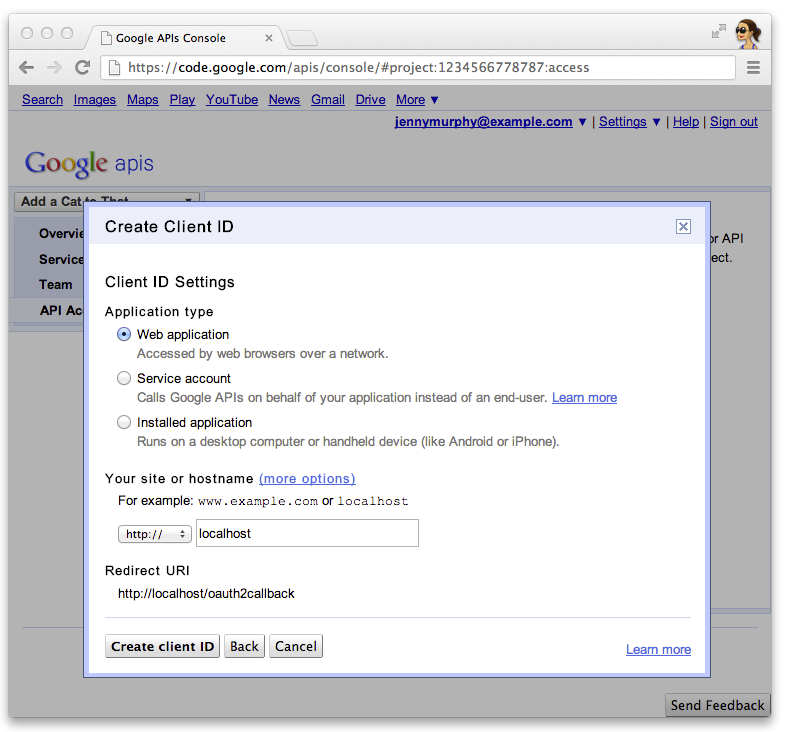
- คลิกแก้ไขการตั้งค่า... สำหรับรหัสไคลเอ็นต์เพื่อระบุ URI การเปลี่ยนเส้นทาง ระบุ
http://localhost:8080/oauth2callbackและ URL ติดต่อกลับสำหรับ App Engine ของคุณ เช่นhttps://myappengineinstance.appspot.com/oauth2callback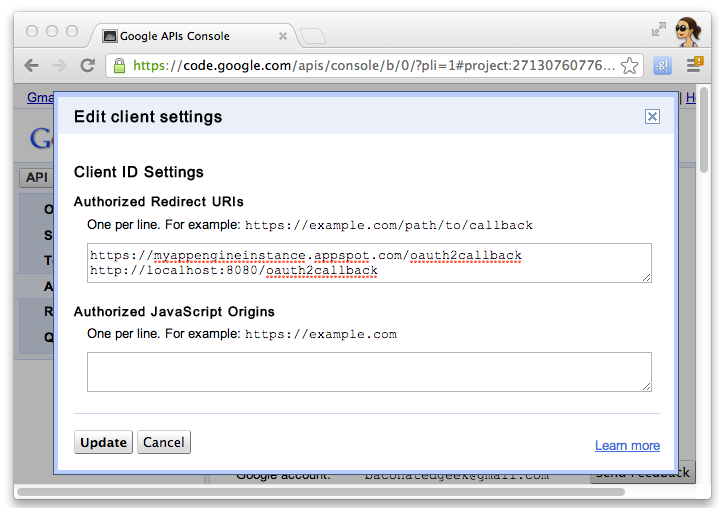
- จดบันทึกรหัสไคลเอ็นต์และข้อมูลลับจากคอนโซล Google APIs คุณจะต้องมี
เพื่อกำหนดค่าโปรเจ็กต์เริ่มต้นอย่างรวดเร็ว
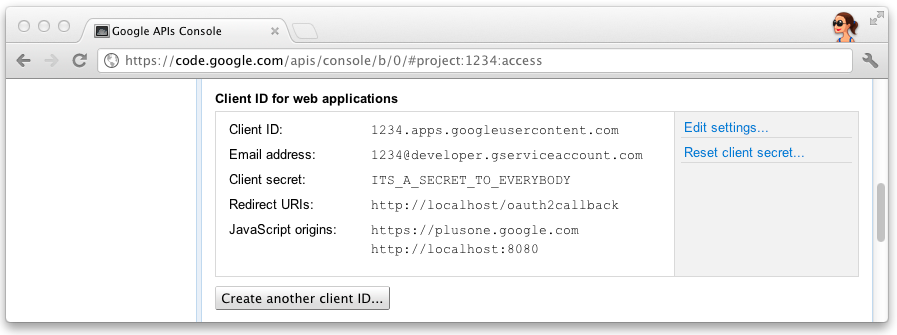
กำลังกำหนดค่าโปรเจ็กต์
กำหนดค่าโปรเจ็กต์ Quick Start เพื่อใช้ข้อมูลไคลเอ็นต์ API โดยทำดังนี้
- ป้อนรหัสไคลเอ็นต์และรหัสลับใน
client_secrets.json:{ "web": { "client_id": "1234.apps.googleusercontent.com", "client_secret": "ITS_A_SECRET_TO_EVERYBODY", "redirect_uris": [ ], "auth_uri": "https://accounts.google.com/o/oauth2/auth", "token_uri": "https://accounts.google.com/o/oauth2/token" } }
- สร้างไฟล์
session.secretเพื่อจัดเก็บคุกกี้เซสชัน$ python -c "import os; print os.urandom(64)" > session.secret
- แก้ไข
app.yamlเพื่อป้อนรหัสแอปพลิเคชันของ App Engine:application: your_app_engine_application_id version: 1 runtime: python27 api_version: 1 threadsafe: true ...
การทำให้โปรเจ็กต์ใช้งานได้
กดปุ่มสีฟ้าทำให้ใช้งานได้ในอินเทอร์เฟซ GUI การเปิดตัว App Engine หรือเรียกใช้เชลล์นี้ เพื่อทำให้โค้ดของคุณใช้งานได้:
$ appcfg.py --oauth2 update .

